#Enterprise AI With Kubernetes
Explore tagged Tumblr posts
Text
Understand how Generative AI is accelerating Kubernetes adoption, shaping industries with scalable, automated, and innovative approaches.
#AI Startups Kubernetes#Enterprise AI With Kubernetes#Generative AI#Kubernetes AI Architecture#Kubernetes For AI Model Deployment#Kubernetes For Deep Learning#Kubernetes For Machine Learning
0 notes
Text
How Is Gen AI Driving Kubernetes Demand Across Industries?
Understand how Generative AI is accelerating Kubernetes adoption, shaping industries with scalable, automated, and innovative approaches. A new breakthrough in AI, called generative AI or Gen AI, is creating incredible waves across industries and beyond. With this technology rapidly evolving there is growing pressure on the available structure to support both the deployment and scalability of…
#AI Startups Kubernetes#Enterprise AI With Kubernetes#Generative AI#Kubernetes AI Architecture#Kubernetes For AI Model Deployment#Kubernetes For Deep Learning#Kubernetes For Machine Learning
0 notes
Text
How Is Gen AI Driving Kubernetes Demand Across Industries?

Unveil how Gen AI is pushing Kubernetes to the forefront, delivering industry-specific solutions with precision and scalability.
Original Source: https://bit.ly/4cPS7G0
A new breakthrough in AI, called generative AI or Gen AI, is creating incredible waves across industries and beyond. With this technology rapidly evolving there is growing pressure on the available structure to support both the deployment and scalability of the technology. Kubernetes, an effective container orchestration platform is already indicating its ability as one of the enablers in this context. This article critically analyzes how Generative AI gives rise to the use of Kubernetes across industries with a focus of the coexistence of these two modern technological forces.
The Rise of Generative AI and Its Impact on Technology
Machine learning has grown phenomenally over the years and is now foundational in various industries including healthcare, banking, production as well as media and entertainment industries. This technology whereby an AI model is trained to write, design or even solve business problems is changing how business is done. Gen AI’s capacity to generate new data and solutions independently has opened opportunities for advancements as has never been seen before.
If companies are adopting Generative AI , then the next big issue that they are going to meet is on scalability of models and its implementation. These resource- intensive applications present a major challenge to the traditional IT architectures. It is here that Kubernetes comes into the picture, which provides solutions to automate deployment, scaling and managing the containerised applications. Kubernetes may be deployed to facilitate the ML and deep learning processing hence maximizing the efficiency of the AI pipeline to support the future growth of Gen AI applications.
The Intersection of Generative AI and Kubernetes
The integration of Generative AI and Kubernetes is probably the most significant traffic in the development of AI deployment approaches. Kubernetes is perfect for the dynamics of AI workloads in terms of scalability and flexibility. The computation of Gen AI models demands considerable resources, and Kubernetes has all the tools required to properly orchestrate those resources for deploying AI models in different setups.
Kubernetes’ infrastructure is especially beneficial for AI startups and companies that plan to use Generative AI. It enables the decentralization of workload among several nodes so that training, testing, and deployment of AI models are highly distributed. This capability is especially important for businesses that require to constantly revolve their models to adapt to competition. In addition, Kubernetes has direct support for GPU, which helps in evenly distributing computational intensity that comes with deep learning workloads thereby making it perfect for AI projects.
Key Kubernetes Features that Enable Efficient Generative AI Deployment
Scalability:
Kubernetes excels at all levels but most notably where applications are scaled horizontally. Especially for Generative AI which often needs a lot of computation, Kubernetes is capable of scaling the pods, the instances of the running processes and provide necessary resources for the workload claims without having any human intervention.
Resource Management:
Effort is required to be allocated efficiently so as to perform the AI workloads. Kubernetes assists in deploying as well as allocating resources within the cluster from where the AI models usually operate while ensuring that resource consumption and distribution is efficiently controlled.
Continuous Deployment and Integration (CI/CD):
Kubernetes allows for the execution of CI CD pipelines which facilitate contingency integration as well as contingency deployment of models. This is essential for enterprises and the AI startups that use the flexibility of launching different AI solutions depending on the current needs of their companies.
GPU Support:
Kubernetes also features the support of the GPUs for the applications in deep learning from scratch that enhances the rate of training and inference of the models of AI. It is particularly helpful for AI applications that require more data processing, such as image and speech recognition.
Multi-Cloud and Hybrid Cloud Support:
The fact that the Kubernetes can operate in several cloud environment and on-premise data centers makes it versatile as AI deployment tool. It will benefit organizations that need a half and half cloud solution and organizations that do not want to be trapped in the web of the specific company.
Challenges of Running Generative AI on Kubernetes
Complexity of Setup and Management:
That aid Kubernetes provides a great platform for AI deployments comes at the cost of operational overhead. Deploying and configuring a Kubernetes Cluster for AI based workloads therefore necessitates knowledge of both Kubernetes and the approach used to develop these models. This could be an issue for organizations that are not able to gather or hire the required expertise.
Resource Constraints:
Generative AI models require a lot of computing power and when running them in a Kubernetes environment, the computational resources can be fully utilised. AI works best when the organizational resources are well managed to ensure that there are no constraints in the delivery of the application services.
Security Concerns:
Like it is the case with any cloud-native application, security is a big issue when it comes to running artificial intelligence models on Kubernetes. Security of the data and models that AI employs needs to be protected hence comes the policies of encryption, access control and monitoring.
Data Management:
Generative AI models make use of multiple dataset samples for its learning process and is hard to deal with the concept in Kubernetes. Managing these datasets as well as accessing and processing them in a manner that does not hinder the overall performance of an organization is often a difficult task.
Conclusion: The Future of Generative AI is Powered by Kubernetes
As Generative AI advances and integrates into many sectors, the Kubernetes efficient and scalable solutions will only see a higher adoption rate. Kubernetes is a feature of AI architectures that offer resources and facilities for the development and management of AI model deployment.
If you’re an organization planning on putting Generative AI to its best use, then adopting Kubernetes is non-negotiable. Mounting the AI workloads, utilizing the resources in the best possible manner, and maintaining the neat compatibility across the multiple and different clouds are some of the key solutions provided by Kubernetes for the deployment of the AI models. With continued integration between Generative AI and Kubernetes, we have to wonder what new and exciting uses and creations are yet to come, thus strengthening Kubernetes’ position as the backbone for enterprise AI with Kubernetes. The future is bright that Kubernetes is playing leading role in this exciting technological revolution of AI.
Original Source: https://bit.ly/4cPS7G0
#AI Startups Kubernetes#Enterprise AI With Kubernetes#Generative AI#Kubernetes AI Architecture#Kubernetes For AI Model Deployment#Kubernetes For Deep Learning#Kubernetes For Machine Learning
0 notes
Text
Top 10 In- Demand Tech Jobs in 2025

Technology is growing faster than ever, and so is the need for skilled professionals in the field. From artificial intelligence to cloud computing, businesses are looking for experts who can keep up with the latest advancements. These tech jobs not only pay well but also offer great career growth and exciting challenges.
In this blog, we’ll look at the top 10 tech jobs that are in high demand today. Whether you’re starting your career or thinking of learning new skills, these jobs can help you plan a bright future in the tech world.
1. AI and Machine Learning Specialists
Artificial Intelligence (AI) and Machine Learning are changing the game by helping machines learn and improve on their own without needing step-by-step instructions. They’re being used in many areas, like chatbots, spotting fraud, and predicting trends.
Key Skills: Python, TensorFlow, PyTorch, data analysis, deep learning, and natural language processing (NLP).
Industries Hiring: Healthcare, finance, retail, and manufacturing.
Career Tip: Keep up with AI and machine learning by working on projects and getting an AI certification. Joining AI hackathons helps you learn and meet others in the field.
2. Data Scientists
Data scientists work with large sets of data to find patterns, trends, and useful insights that help businesses make smart decisions. They play a key role in everything from personalized marketing to predicting health outcomes.
Key Skills: Data visualization, statistical analysis, R, Python, SQL, and data mining.
Industries Hiring: E-commerce, telecommunications, and pharmaceuticals.
Career Tip: Work with real-world data and build a strong portfolio to showcase your skills. Earning certifications in data science tools can help you stand out.
3. Cloud Computing Engineers: These professionals create and manage cloud systems that allow businesses to store data and run apps without needing physical servers, making operations more efficient.
Key Skills: AWS, Azure, Google Cloud Platform (GCP), DevOps, and containerization (Docker, Kubernetes).
Industries Hiring: IT services, startups, and enterprises undergoing digital transformation.
Career Tip: Get certified in cloud platforms like AWS (e.g., AWS Certified Solutions Architect).
4. Cybersecurity Experts
Cybersecurity professionals protect companies from data breaches, malware, and other online threats. As remote work grows, keeping digital information safe is more crucial than ever.
Key Skills: Ethical hacking, penetration testing, risk management, and cybersecurity tools.
Industries Hiring: Banking, IT, and government agencies.
Career Tip: Stay updated on new cybersecurity threats and trends. Certifications like CEH (Certified Ethical Hacker) or CISSP (Certified Information Systems Security Professional) can help you advance in your career.
5. Full-Stack Developers
Full-stack developers are skilled programmers who can work on both the front-end (what users see) and the back-end (server and database) of web applications.
Key Skills: JavaScript, React, Node.js, HTML/CSS, and APIs.
Industries Hiring: Tech startups, e-commerce, and digital media.
Career Tip: Create a strong GitHub profile with projects that highlight your full-stack skills. Learn popular frameworks like React Native to expand into mobile app development.
6. DevOps Engineers
DevOps engineers help make software faster and more reliable by connecting development and operations teams. They streamline the process for quicker deployments.
Key Skills: CI/CD pipelines, automation tools, scripting, and system administration.
Industries Hiring: SaaS companies, cloud service providers, and enterprise IT.
Career Tip: Earn key tools like Jenkins, Ansible, and Kubernetes, and develop scripting skills in languages like Bash or Python. Earning a DevOps certification is a plus and can enhance your expertise in the field.
7. Blockchain Developers
They build secure, transparent, and unchangeable systems. Blockchain is not just for cryptocurrencies; it’s also used in tracking supply chains, managing healthcare records, and even in voting systems.
Key Skills: Solidity, Ethereum, smart contracts, cryptography, and DApp development.
Industries Hiring: Fintech, logistics, and healthcare.
Career Tip: Create and share your own blockchain projects to show your skills. Joining blockchain communities can help you learn more and connect with others in the field.
8. Robotics Engineers
Robotics engineers design, build, and program robots to do tasks faster or safer than humans. Their work is especially important in industries like manufacturing and healthcare.
Key Skills: Programming (C++, Python), robotics process automation (RPA), and mechanical engineering.
Industries Hiring: Automotive, healthcare, and logistics.
Career Tip: Stay updated on new trends like self-driving cars and AI in robotics.
9. Internet of Things (IoT) Specialists
IoT specialists work on systems that connect devices to the internet, allowing them to communicate and be controlled easily. This is crucial for creating smart cities, homes, and industries.
Key Skills: Embedded systems, wireless communication protocols, data analytics, and IoT platforms.
Industries Hiring: Consumer electronics, automotive, and smart city projects.
Career Tip: Create IoT prototypes and learn to use platforms like AWS IoT or Microsoft Azure IoT. Stay updated on 5G technology and edge computing trends.
10. Product Managers
Product managers oversee the development of products, from idea to launch, making sure they are both technically possible and meet market demands. They connect technical teams with business stakeholders.
Key Skills: Agile methodologies, market research, UX design, and project management.
Industries Hiring: Software development, e-commerce, and SaaS companies.
Career Tip: Work on improving your communication and leadership skills. Getting certifications like PMP (Project Management Professional) or CSPO (Certified Scrum Product Owner) can help you advance.
Importance of Upskilling in the Tech Industry
Stay Up-to-Date: Technology changes fast, and learning new skills helps you keep up with the latest trends and tools.
Grow in Your Career: By learning new skills, you open doors to better job opportunities and promotions.
Earn a Higher Salary: The more skills you have, the more valuable you are to employers, which can lead to higher-paying jobs.
Feel More Confident: Learning new things makes you feel more prepared and ready to take on tougher tasks.
Adapt to Changes: Technology keeps evolving, and upskilling helps you stay flexible and ready for any new changes in the industry.
Top Companies Hiring for These Roles
Global Tech Giants: Google, Microsoft, Amazon, and IBM.
Startups: Fintech, health tech, and AI-based startups are often at the forefront of innovation.
Consulting Firms: Companies like Accenture, Deloitte, and PwC increasingly seek tech talent.
In conclusion, the tech world is constantly changing, and staying updated is key to having a successful career. In 2025, jobs in fields like AI, cybersecurity, data science, and software development will be in high demand. By learning the right skills and keeping up with new trends, you can prepare yourself for these exciting roles. Whether you're just starting or looking to improve your skills, the tech industry offers many opportunities for growth and success.
#Top 10 Tech Jobs in 2025#In- Demand Tech Jobs#High paying Tech Jobs#artificial intelligence#datascience#cybersecurity
2 notes
·
View notes
Text
What Oracle Skills Are Currently In High Demand?

Introduction
Oracle technologies dominate the enterprise software landscape, with businesses worldwide relying on Oracle databases, cloud solutions, and applications to manage their data and operations. As a result, professionals with Oracle expertise are in high demand. Whether you are an aspiring Oracle professional or looking to upgrade your skills, understanding the most sought-after Oracle competencies can enhance your career prospects. Here are the top Oracle skills currently in high demand.
Oracle Database Administration (DBA)
Oracle Database Administrators (DBAs) are crucial in managing and maintaining Oracle databases. Unlock the world of database management with our Oracle Training in Chennai at Infycle Technologies. Organizations seek professionals to ensure optimal database performance, security, and availability. Key skills in demand include:
Database installation, configuration, and upgrades
Performance tuning and optimization
Backup and recovery strategies using RMAN
High-availability solutions such as Oracle RAC (Real Application Clusters)
Security management, including user access control and encryption
SQL and PL/SQL programming for database development
Oracle Cloud Infrastructure (OCI)
With businesses rapidly moving to the cloud, Oracle Cloud Infrastructure (OCI) has become a preferred choice for many enterprises. Professionals skilled in OCI can help organizations deploy, manage, and optimize cloud environments. Key areas of expertise include:
Oracle Cloud Architecture and Networking
OCI Compute, Storage, and Database services
Identity and Access Management (IAM)
Oracle Kubernetes Engine (OKE)
Security Best Practices and Compliance in Cloud Environments
Migration strategies from on-premises databases to OCI
Oracle SQL And PL/SQL Development
Oracle SQL and PL/SQL are fundamental database developers, analysts, and administrators skills. Companies need professionals who can:
Write efficient SQL queries for data retrieval & manipulation
Develop PL/SQL procedures, triggers, and packages
Optimize database performance with indexing and query tuning
Work with advanced SQL analytics functions and data modelling
Implement automation using PL/SQL scripts
Oracle ERP And E-Business Suite (EBS)
Enterprise Resource Planning (ERP) solutions from Oracle, such as Oracle E-Business Suite (EBS) and Oracle Fusion Cloud ERP, are widely used by organizations to manage business operations. Professionals with rising experience in these areas are highly sought after. Essential skills include:
ERP implementation and customization
Oracle Financials, HRMS, and Supply Chain modules
Oracle Workflow and Business Process Management
Reporting and analytics using Oracle BI Publisher
Integration with third-party applications
Oracle Fusion Middleware
Oracle Fusion Middleware is a comprehensive software suite that facilitates application integration, business process automation, and security. Professionals with experience in:
Oracle WebLogic Server administration
Oracle SOA Suite (Service-Oriented Architecture)
Oracle Identity and Access Management (IAM)
Oracle Data Integration and ETL tools
The job market highly values Java EE and Oracle Application Development Framework (ADF).
Oracle BI (Business Intelligence) And Analytics
Data-driven decision-making is critical for modern businesses, and Oracle Business Intelligence (BI) solutions help organizations derive insights from their data. In-demand skills include:
Oracle BI Enterprise Edition (OBIEE)
Oracle Analytics Cloud (OAC)
Data warehousing concepts and ETL processes
Oracle Data Visualization and Dashboarding
Advanced analytics using machine learning and AI tools within Oracle BI
Oracle Exadata And Performance Tuning
Oracle Exadata is a high-performance engineered system designed for large-scale database workloads. Professionals skilled in Oracle Exadata and performance tuning are in great demand. Essential competencies include:
Exadata architecture and configuration
Smart Flash Cache and Hybrid Columnar Compression (HCC)
Exadata performance tuning techniques
Storage indexing and SQL query optimization
Integration with Oracle Cloud for hybrid cloud environments
Oracle Security And Compliance
Organizations need Oracle professionals to ensure database and application security with increasing cybersecurity threats. Key security-related Oracle skills include:
Oracle Data Safe and Database Security Best Practices
Oracle Audit Vault and Database Firewall
Role-based access control (RBAC) implementation
Encryption and Data Masking techniques
Compliance with regulations like GDPR and HIPAA
Oracle DevOps And Automation
DevOps practices have become essential for modern software development and IT operations. Enhance your journey toward a successful career in software development with Infycle Technologies, the Best Software Training Institute in Chennai. Oracle professionals with DevOps expertise are highly valued for their ability to automate processes and ensure continuous integration and deployment (CI/CD). Relevant skills include:
Oracle Cloud DevOps tools and automation frameworks
Terraform for Oracle Cloud Infrastructure provisioning
CI/CD pipeline implementation using Jenkins and GitHub Actions
Infrastructure as Code (IaC) practices with Oracle Cloud
Monitoring and logging using Oracle Cloud Observability tools
Oracle AI And Machine Learning Integration
Artificial intelligence (AI) and machine learning (ML) are transforming businesses' operations, and Oracle has integrated AI/ML capabilities into its products. Professionals with expertise in:
Oracle Machine Learning (OML) for databases
AI-driven analytics in Oracle Analytics Cloud
Chatbots and AI-powered automation using Oracle Digital Assistant
Data Science and Big Data processing with Oracle Cloud are highly demanding for data-driven decision-making roles.
Conclusion
The demand for Oracle professionals grows as businesses leverage Oracle's powerful database, cloud, and enterprise solutions. Whether you are a database administrator, cloud engineer, developer, or security expert, acquiring the right Oracle skills can enhance your career opportunities and keep you ahead in the competitive job market. You can position yourself as a valuable asset in the IT industry by focusing on high-demand skills such as Oracle Cloud Infrastructure, database administration, ERP solutions, and AI/ML integration. If you want to become an expert in Oracle technologies, consider enrolling in Oracle certification programs, attending workshops, and gaining hands-on experience to strengthen your skill set and stay ahead in the industry.
0 notes
Text
Rick Caccia, CEO and Co-Founder of WitnessAI – Interview Series
New Post has been published on https://thedigitalinsider.com/rick-caccia-ceo-and-co-founder-of-witnessai-interview-series/
Rick Caccia, CEO and Co-Founder of WitnessAI – Interview Series


Rick Caccia, CEO and Co-Founder of WitnessAI, has extensive experience in launching security and compliance products. He has held leadership roles in product and marketing at Palo Alto Networks, Google, and Symantec. Caccia previously led product marketing at ArcSight through its IPO and subsequent operations as a public company and served as the first Chief Marketing Officer at Exabeam. He holds multiple degrees from the University of California, Berkeley.
WitnessAI is developing a security platform focused on ensuring the safe and secure use of AI in enterprises. With each major technological shift—such as web, mobile, and cloud computing—new security challenges emerge, creating opportunities for industry leaders to emerge. AI represents the next frontier in this evolution.
The company aims to establish itself as a leader in AI security by combining expertise in machine learning, cybersecurity, and large-scale cloud operations. Its team brings deep experience in AI development, reverse engineering, and multi-cloud Kubernetes deployment, addressing the critical challenges of securing AI-driven technologies.
What inspired you to co-found WitnessAI, and what key challenges in AI governance and security were you aiming to solve?
When we first started the company, we thought that security teams would be concerned about attacks on their internal AI models. Instead, the first 15 CISOs we spoke with said the opposite, that widespread corporate LLM rollout was a long way off, but the urgent problem was protecting their employees’ use of other people’s AI apps. We took a step back and saw that the problem wasn’t fending off scary cyberattacks, it was safely enabling companies to use AI productively. While governance maybe less sexy than cyberattacks, it’s what security and privacy teams actually needed. They needed visibility of what their employees were doing with third-party AI, a way to implement acceptable use policies, and a way to protect data without blocking use of that data. So that’s what we built.
Given your extensive experience at Google Cloud, Palo Alto Networks, and other cybersecurity firms, how did those roles influence your approach to building WitnessAI?
I have spoken with many CISOs over the years. One of the most common things I hear from CISOs today is, “I don’t want to be ‘Doctor No’ when it comes to AI; I want to help our employees use it to be better.” As someone who has worked with cybersecurity vendors for a long time, this is a very different statement. It’s more reminiscent of the dotcom-era, back when the Web was a new and transformative technology. When we built WitnessAI, we specifically started with product capabilities that helped customers adopt AI safely; our message was that this stuff is like magic and of course everyone wants to experience magic. I think that security companies are too quick to play the fear card, and we wanted to be different.
What sets WitnessAI apart from other AI governance and security platforms in the market today?
Well, for one thing, most other vendors in the space are focused primarily on the security part, and not on the governance part. To me, governance is like the brakes on a car. If you really want to get somewhere quickly, you need effective brakes in addition to a powerful engine. No one is going to drive a Ferrari very fast if it has no brakes. In this case, your company using AI is the Ferrari, and WitnessAI is the brakes and steering wheel.
In contrast, most of our competitors focus on theoretical scary attacks on an organization’s AI model. That is a real problem, but it’s a different problem than getting visibility and control over how my employees are using any of the 5,000+ AI apps already on the internet. It’s a lot easier for us to add an AI firewall (and we have) than it is for the AI firewall vendors to add effective governance and risk management.
How does WitnessAI balance the need for AI innovation with enterprise security and compliance?
As I wrote earlier, we believe that AI should be like magic – it can help you do amazing things. With that in mind, we think AI innovation and security are linked. If your employees can use AI safely, they will use it often and you will pull ahead. If you apply the typical security mindset and lock it down, your competitor won’t do that, and they will pull ahead. Everything we do is about enabling safe adoption of AI. As one customer told me, “This stuff is magic, but most vendors treat it like it was black magic, scary and something to fear.” At WitnessAI, we’re helping to enable the magic.
Can you talk about the company’s core philosophy regarding AI governance—do you see AI security as an enabler rather than a restriction?
We regularly have CISOs come up to us at events where we have presented, and they tell us, “Your competitors are all about how scary AI is, and you are the only vendor that is telling us how to actually use it effectively.” Sundar Pichai at Google has said that “AI could be more profound than fire,” and that is an interesting metaphor. Fire can be incredibly damaging, as we have seen recently. But controlled fire can make steel, which accelerates innovation. Sometimes at WitnessAI we talk about creating the innovation that enables our customers to safely direct AI “fire” to create the equivalent of steel. Alternatively, if you think AI is akin to magic, then perhaps our goal is to give you a magic wand, to direct and control it.
In either case, we absolutely believe that safely enabling AI is the goal. Just to give you an example, there are many data loss prevention (DLP) tools, it’s a technology that’s been around forever. And people try to apply DLP to AI use, and maybe the DLP browser plug in sees that you have typed in a long prompt asking for help with your work, and that prompt advertently has a customer ID number in it. What happens? The DLP product blocks the prompt from going out, and you never get an answer. That’s restriction. Instead, with WItnessAI, we can identify the same number, and silently and surgically redact it on the fly, and then unredact it in the AI response, so that you get a useful answer while also keeping your data safe. That’s enablement.
What are the biggest risks enterprises face when deploying generative AI, and how does WitnessAI mitigate them?
The first is visibility. Many people are surprised to learn that the AI application universe isn’t just ChatGPT and now DeepSeek; there are literally thousands of AI apps on the internet and enterprises absorb risks from employees using these apps, so the first step is getting visibility: which AI apps are my employees using, what are they doing with those apps, and is it risky?
The second is control. Your legal team has constructed a comprehensive acceptable use policy for AI, one that ensures the safety of customer data, citizen data, intellectual property, as well as employee safety. How will you implement this policy? Is it in your endpoint security product? In your firewall? In your VPN? In your cloud? What if they are all from different vendors? So, you need a way to define and enforce acceptable use policy that is consistent across AI models, apps, clouds, and security products.
The third is protection of your own apps. In 2025, we will see much faster adoption of LLMs within enterprises, and then faster rollout of chat apps powered by those LLMs. So, enterprises need to make sure not only that the apps are protected, but also that the apps don’t say “dumb” things, like recommend a competitor.
We address all three. We provide visibility into which apps people are accessing, how they are using those apps, policy that is based on who you are and what you are trying to do, and very effective tools for preventing attacks such as jailbreaks or unwanted behaviors from your bots.
How does WitnessAI’s AI observability feature help companies track employee AI usage and prevent “shadow AI” risks?
WitnessAI connects to your network easily and silently builds a catalog of every AI app (and there are literally thousands of them on the internet) that your employees’ access. We tell you where those apps are located, where they host their data, etc so that you understand how risky these apps are. You can turn on conversation visibility, where we use deep packet inspection to observe prompts and responses. We can classify prompts by risk and by intent. Intent might be “write code” or “write a corporate contract.” It’s important because we then let you write intent-based policy controls.
What role does AI policy enforcement play in ensuring corporate AI compliance, and how does WitnessAI streamline this process?
Compliance means ensuring that your company is following regulations or policies, and there are two parts to ensuring compliance. The first is that you must be able to identify problematic activity. For example, I need to know that an employee is using customer data in a way that might run afoul of a data protection law. We do that with our observability platform. The second part is describing and enforcing policy against that activity. You don’t want to simply know that customer data is leaking, you want to stop it from leaking. So, we we’ve built a unique AI-specific policy engine, Witness/CONTROL, that lets you easily build identity and intention-based policies to protect data, prevent harmful or illegal responses, etc. For example, you can build a policy that says something like, “Only our legal department can use ChatGPT to write corporate contracts, and if they do so, automatically redact any PII.” Easy to say, and with WitnessAI, easy to implement.
How does WitnessAI address concerns around LLM jailbreaks and prompt injection attacks?
We have a hardcore AI research team—really sharp. Early on, they built a system to create synthetic attack data, in addition to pulling in widely available training data sets. As a result, we’ve benchmarked our prompt injection against everything out there, we are over 99% effective and regularly catch attacks that the models themselves miss.
In practice, most companies we speak with want to start with employee app governance, and then a bit later they roll out an AI customer app based on their internal data. So, they use Witness to protect their people, then they turn on the prompt injection firewall. One system, one consistent way to build policies, easy to scale.
What are your long-term goals for WitnessAI, and where do you see AI governance evolving in the next five years?
So far, we’ve only talked about a person-to-chat app model here. Our next phase will be to handle app to app, i.e agentic AI. We’ve designed the APIs in our platform to work equally well with both agents and humans. Beyond that, we believe we’ve built a new way to get network-level visibility and policy control in the AI age, and we’ll be growing the company with that in mind.
Thank you for the great interview, readers who wish to learn more should visit WitnessAI.
#000#2025#ADD#adoption#Agentic AI#agents#ai#AI compliance#AI development#ai governance#AI innovation#ai model#AI models#AI research#ai security#amazing#APIs#app#approach#apps#bots#browser#Building#california#CEO#chatGPT#CISOs#Cloud#cloud computing#clouds
0 notes
Text
Goognu: The Leading DevOps Consulting Company for Seamless Digital Transformation
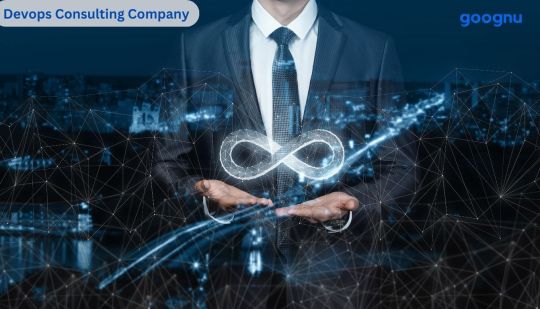
In today’s fast-paced digital world, businesses must stay agile, innovative, and efficient to stay ahead of the competition. Traditional IT operations often struggle with inefficiencies, slow deployments, and a lack of collaboration between development and operations teams. This is where DevOps plays a crucial role. If you are looking for a trusted DevOps Consulting Company, Goognu is your one-stop solution to accelerate your digital transformation journey.
Why DevOps?
DevOps is a revolutionary approach that bridges the gap between software development and IT operations. It promotes automation, continuous integration (CI), continuous deployment (CD), and seamless collaboration. The result? Faster development cycles, improved efficiency, and high-quality software delivery.
With DevOps, businesses can:
· Reduce time-to-market with automated deployments
· Enhance software reliability through continuous monitoring
· Improve collaboration between development, operations, and security teams
· Ensure scalability and security with cloud integration and DevSecOps
· Optimize infrastructure with containerization and microservices
Why Choose Goognu for DevOps Consulting?
At Goognu, we specialize in helping businesses adopt DevOps methodologies tailored to their unique needs. Whether you are a startup, an enterprise, or a cloud-native organization, our DevOps Consulting Services ensure smooth implementation with measurable results.
1. Comprehensive DevOps Assessment
Our experts conduct an in-depth analysis of your current development and operational processes. We identify bottlenecks, inefficiencies, and areas for automation to create a strategic DevOps roadmap for your business.
2. DevOps Implementation & Automation
We help you integrate CI/CD pipelines, Infrastructure as Code (IaC), automated testing, and deployment strategies to streamline your software delivery lifecycle. Our automation solutions improve efficiency while reducing human error.
3. Cloud and Containerization Solutions
As a certified partner with leading cloud providers like AWS, Microsoft Azure, and Google Cloud, we help businesses migrate to cloud-native architectures. Our Docker and Kubernetes expertise enables seamless containerization, orchestration, and scalability.
4. DevSecOps for Enhanced Security
Security is at the core of DevOps, and our DevSecOps solutions ensure that security is integrated at every stage of the development lifecycle. We implement automated security testing, vulnerability scanning, and compliance checks to safeguard your applications.
5. Continuous Monitoring & Performance Optimization
Goognu ensures real-time monitoring of applications, infrastructure, and logs to proactively detect issues and optimize performance. Our AI-powered analytics and observability solutions help businesses make data-driven decisions.
6. Dedicated Support & Training
We don’t just implement DevOps—we empower your team with the necessary skills. Our DevOps training programs ensure that your IT teams stay ahead with the latest industry trends and best practices.
Industries We Serve
At Goognu, we cater to various industries, including:
· Finance & Banking – Secure and compliant DevOps solutions
· Healthcare – Scalable and reliable infrastructure for medical applications
· E-commerce – High-performance CI/CD for seamless online transactions
· Media & Entertainment – Scalable cloud architectures for streaming platforms
· EdTech & E-Learning – Automated deployments for better student experiences
Success Stories: How We Helped Businesses Scale with DevOps
Case Study: E-commerce Giant Achieves 60% Faster Deployments One of our clients in the e-commerce industry faced challenges with frequent downtime and slow application updates. With Goognu’s DevOps implementation, they achieved:
· 60% reduction in deployment time
· 99.9% uptime with automated monitoring
· Enhanced customer experience with zero-downtime releases
Take Your Business to the Next Level with Goognu
The future of IT is DevOps-driven, and businesses that embrace this transformation gain a competitive edge. Goognu provides cutting-edge DevOps consulting services tailored to your business needs, ensuring faster releases, robust security, and optimized performance.
Are you ready to transform your IT operations? Contact Goognu today and embark on your DevOps journey!
0 notes
Text
Harnessing the Power of Advanced Cloud Computing for Business Growth
Introduction
Advanced Cloud Computing is a major driver of company efficiency and creativity in today's digital environment. To maximize efficiency and cut expenses, businesses employ serverless architectures, AI-driven automation, and multi-cloud environments. Businesses can grow dynamically while maintaining security and compliance thanks to developments in edge computing, containerization, and intelligent workload management. This essay examines how a rapidly changing technological ecosystem, advanced cloud computing helps organizations achieve agility, resilience, and digital transformation.
Optimizing Performance with Cloud-Native Technologies
The performance of systems has been increased with the use of cloud-native technology. Businesses may develop scalable apps without worrying about infrastructure management by utilizing serverless computing (AWS Lambda, Google Cloud Functions), microservices architecture, and Kubernetes orchestration. Flexibility is ensured by hybrid and multi-cloud architectures, which avoid vendor lock-in. Global accessibility is improved via distributed caching, automatic load balancing, and content delivery networks (CDNs). Businesses may attain improved resource usage, decreased latency, and increased efficiency by utilizing Advanced Cloud Computing.
AI-Driven Cloud Automation for Scalability
Through process automation and resource management optimization, artificial intelligence has completely transformed cloud computing. Proactive monitoring and self-healing infrastructure are made possible by AIOps, predictive analytics, and AI-based cloud optimization technologies. Cloud efficiency is increased by automatic scaling, real-time performance monitoring, and workload allocation powered by machine learning. Cloud security solutions with AI capabilities identify threats and reduce risks instantly. Cost reductions, improved performance, and operational excellence are guaranteed when AI is integrated with advanced cloud computing.
Securing Cloud Environments for Business Continuity
Security is still a top priority for companies moving to the clouds. Cloud security is improved by putting identity access management (IAM), encryption, and zero-trust security principles into practice. Cybersecurity risks are reduced via AI-driven threat detection, real-time anomaly monitoring, and security compliance automation. Data integrity is guaranteed via automatic backups, secure cloud storage, and disaster recovery as a service (DRaaS). Businesses may achieve long-term success with safe, reliable, and compliant cloud infrastructures thanks to advanced cloud computing.
Conclusion
The development of advanced cloud computing, which offers increased security, automation, and scalability, has revolutionized enterprises. Businesses may create infrastructures that are prepared for the future by combining cloud-native technologies, serverless computing, and artificial intelligence. While a cloud computing internship gives professionals practical experience and prepares them for the next wave of cloud innovation, a cloud computing training program gives professionals the necessary skills.
#advanced cloud computing#advanced cloud computing training#advanced cloud computing internship#advanced cloud computing training in pune#e3l#e3l.co
0 notes
Text
The Future of Software Development: Top Technologies to Watch in 2025
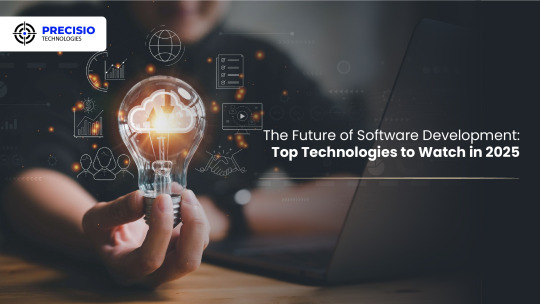
Software development is one of the growing fields due to the emergence and development of numerous technologies that revolutionize industries and user interfaces. The constant battle for keeping up with rivals obligatory sets businesses on the course of embracing innovative solutions and ideas. In today’s blog, we will list down the top technologies that are expected to transform software development by 2025.
1. Artificial Intelligence and Machine Learning
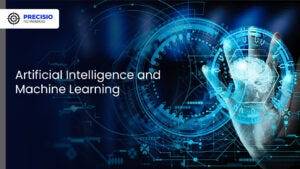
Many companies do not consider AI and ML as mere hyped terms, but rather as essential components in software product development companies. These technologies include increasing automation of broad working processes as well as predictive analysis. GitHub Copilot is one such AI writing tool that is saving developers time and making it easier to write good code.
2. Low-Code and No-Code Platforms
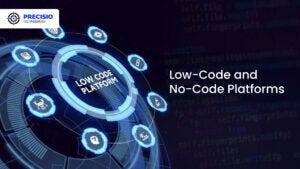
Low-code or no-code solutions are becoming the next frontier and are enabling people to develop software. These tools allow applications to be constructed with little coding by nontechnical individuals and businesses. The given trend helps providers of customized software development companies to provide solutions that are developed significantly faster with the same price tag and still presents the option of customization for intricate specifications.
3. Cloud-Native Development
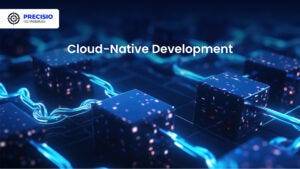
Technology modernization remains in high swing as more firms adopt cloud-native development. Modern enterprises are building scalable, flexible, and resilient applications through Kubernetes, serverless architectures, and microservices. SaaS product development companies are driving this change making sure products are easily integrated and there are lower levels of infrastructure overhead.
4. Blockchain Technology
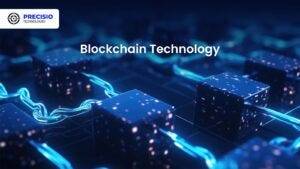
Blockchain is not just a system for the generation of virtual money. That is how it is revolutionizing markets such as supply chain, healthcare, and finance, by offering secure and extremely trustworthy solutions. The custom software product development firms are now incorporating the use of blockchain in creating dApps for various sectors.
5. DevSecOps
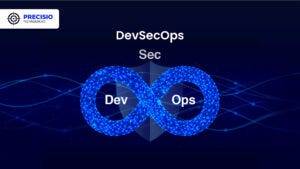
Security is an important consideration in 2025 even when implementing DevOps. DevSecOps enable the security aspect of any development process to be combined with the various development stages hence reducing various risks.Tools like Jira software development facilitate collaboration among development, security, and operations teams.
6. Progressive Web Applications (PWAs)
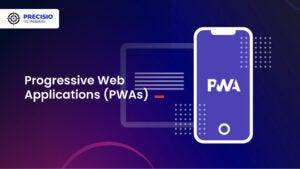
The key advantage of PWAs is that they take the benefits of web and application development approaches to provide users with fast, reliable, and smooth experiences. It removes the need for applications stores, making it cheap and achievable. PWAs are currently being used by custom software application developers to address demand for light and efficient applications.
7. Quantum Computing
Despite the fact that quantum computing is still in its early stages, it carries a staggering amount of opportunities for solving large tasks in logistics, cryptography and artificial intelligence. So there is a trend that software product engineering will pay more attention to this new technology to further expand the prospect.
READ MORE- https://www.precisio.tech/the-future-of-software-development-top-technologies-to-watch-in-2025/
0 notes
Text
Top Technologies to Hire Dedicated Developers in India
Hiring dedicated developers in India is a strategic decision for startups, SMBs, enterprises, and tech firms worldwide. India has established itself as a global leader in software development, offering a vast talent pool, cost-effective solutions, and expertise in cutting-edge technologies. Companies looking to hire dedicated developers in India benefit from affordability, expertise, and seamless collaboration with offshore development teams.
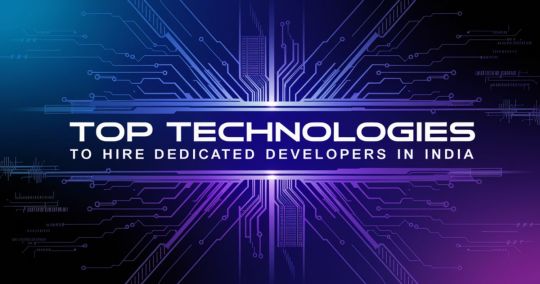
However, navigating the hiring landscape while balancing cost, quality, and project execution can be challenging. This guide will help you identify the best technologies to hire dedicated developers in India, explore the top platforms to find dedicated developers in India, and highlight cost-effective ways to hire Indian software developers.
Why India is a Leading Hub for Dedicated Developers
1) Large Talent Pool with Diverse Expertise:
India produces over 1.5 million engineering graduates annually, with expertise in full-stack development, cloud computing, AI, blockchain, and other emerging technologies. This ensures access to a diverse and highly skilled workforce, making it an attractive option to hire Indian software developers for various projects.
2) Cost-Effective Development Without Quality Compromise:
Hiring offshore developers in India can save businesses 40–70% compared to the USA, UK, or Europe, making it a practical option for companies operating under budget constraints.
3) Strong Educational Background & Technical Excellence:
Indian developers have a robust foundation in STEM (Science, Technology, Engineering, and Mathematics), enabling them to excel in problem-solving, software architecture, and complex coding. This makes it easier for companies to hire a dedicated development team in India that aligns with their project needs.
4) Supportive Government Policies & IT Infrastructure:
India’s IT-friendly policies, tax incentives, and world-class tech infrastructure make it a preferred offshore development hub, further boosting the demand for offshore developers in India.
Top Technologies for Hiring Dedicated Developers in India
1. Web Development Technologies
JavaScript Frameworks (React.js, Angular, Vue.js):
React.js — Best for fast, scalable UIs (used by Facebook, Instagram, Airbnb).
Angular — Ideal for enterprise-grade applications with robust architecture.
Vue.js — Lightweight and flexible, perfect for startups and dynamic web apps.
Backend Technologies:
Node.js — Best for real-time applications (used by Netflix, LinkedIn, PayPal).
PHP & Laravel — Cost-effective web development; Laravel ensures security & scalability.
Python & Django/Flask — Ideal for data-driven and high-security applications.
2. Mobile App Development Technologies
Cross-Platform Development:
Flutter — Single codebase for iOS & Android (used by Google Ads, Alibaba, BMW).
React Native — Developed by Facebook, ideal for hybrid mobile applications.
Native Mobile Development:
Swift — Apple’s preferred language for iOS development.
Kotlin — Google-backed, the standard for Android app development.
3. Enterprise & Backend Development Technologies
Java & Spring Boot — Scalable & secure enterprise applications (used in banking & healthcare).
.NET & C# — Best for Microsoft-based enterprise solutions.
Golang — High-performance backend development, cloud computing, AI, and microservices.
4. Emerging & Niche Technologies
Blockchain (Ethereum, Hyperledger) — Ideal for fintech, smart contracts, supply chain management.
AI & Machine Learning (TensorFlow, PyTorch) — Used for chatbots, automation, predictive analytics.
DevOps & Cloud (AWS, Azure, Kubernetes) — Ensures seamless CI/CD pipelines & automated deployments.
Cybersecurity — Essential for data protection and compliance.
Key Factors to Consider When Hiring Dedicated Developers in India
A. Cost & Budget Considerations:
Compare offshore vs. in-house costs.
Assess long-term ROI rather than just initial cost savings.
B. Quality & Skillset Assessment:
Verify developer expertise in relevant technologies.
Review portfolios, case studies, and previous client feedback.
C. Communication & Time Zone Management:
Ensure clear communication via Slack, Zoom, Jira, Trello.
Hire developers comfortable with Agile methodologies.
D. Project Management & Risk Mitigation:
Set clear milestones, deliverables, and quality assurance benchmarks.
Establish security protocols for protecting sensitive information.
Top Platforms to Find Dedicated Developers in India
1) Freelance Platforms:
Upwork, Fiverr — Ideal for short-term projects and independent developers.
2) Dedicated Hiring Platforms:
Turing, Toptal — Pre-vetted developers for high-quality, complex projects.
3) IT Outsourcing Companies & Agencies:
Best for businesses seeking long-term, scalable development teams with end-to-end project management.
4) Direct Recruitment via LinkedIn & Job Boards:
Perfect for startups and enterprises looking to hire full-time developers.
Advantages of Hiring Offshore Developers from India
Cost Savings — Businesses can reduce costs significantly by hiring Indian software developers.
Access to Skilled Talent — A vast pool of developers proficient in the latest technologies.
Scalability — Easily expand or downsize teams based on project needs.
Time Zone Advantage — 24/7 development cycle with overlapping work hours.
Strong Work Ethic — Indian developers are known for their commitment and problem-solving abilities.
How to Hire Dedicated Developers in India
Define Project Requirements — Clearly outline the technologies, skills, and experience needed.
Choose the Right Hiring Model — Decide between freelance, dedicated teams, or IT outsourcing.
Evaluate Developer Skills — Conduct coding tests, portfolio reviews, and technical interviews.
Ensure Smooth Onboarding — Set up communication channels and development workflows.
Conclusion:
Hiring dedicated developers in India is a smart choice for businesses looking to build high-quality software solutions while optimizing costs. With expertise in top technologies like web development, mobile app development, enterprise solutions, and emerging fields like AI and blockchain, India offers a vast talent pool to meet diverse project needs.
By carefully selecting the right technology stack, assessing developer skills, and choosing the best hiring platform, businesses can successfully scale their development teams and achieve long-term success.
Looking to hire dedicated developers in India? Partner with iQlance to get top-tier software developers specializing in web, mobile, and enterprise solutions. Build your dream team with expert developers tailored to your project needs. Contact us today to get started!
#hirededicateddevelopersinindia#besttechnologiestohiredevelopersinindia#toptechnologiesfordedicateddevelopers#hiresoftwaredevelopersinindia#hirewebdevelopersinindia#hiremobileappdevelopersinindia#offshorededicateddevelopersindia#indiadedicateddevelopmentteam#besttechstackforhiringdevelopers#howtohirededicateddevelopersinindia
0 notes
Text
DevOps in the Cloud: AWS, Azure, and Google Cloud Compared
DevOps in the Cloud: AWS, Azure, and Google Cloud Compared
Cloud computing has revolutionized DevOps, enabling organizations to build scalable, automated, and resilient infrastructure.

2. DevOps Features Comparison
📌 Continuous Integration & Deployment (CI/CD)
All three cloud providers offer CI/CD services to automate software builds, testing, and deployments:
AWS: CodePipeline (CI/CD) + CodeDeploy (deployment automation).
Azure: Azure DevOps (full DevOps suite with CI/CD, testing, repo management).
Google Cloud: Cloud Build (CI/CD) + Cloud Deploy (continuous deployment for Kubernetes).
🔹 Best For:
AWS — Ideal for integrating DevOps into AWS-native environments.
Azure — Best for enterprises using Microsoft tools (e.g., .NET, Active Directory).
Google Cloud — Strong Kubernetes-native CI/CD for cloud-native apps.
📌 Infrastructure as Code (IaC) & Automation
Infrastructure as Code (IaC) allows teams to manage cloud infrastructure programmatically.
AWS: CloudFormation (AWS-native IaC) + Terraform (third-party).
Azure: ARM Templates (Azure Resource Manager) + Terraform.
Google Cloud: Deployment Manager + Terraform.
🔹 Best For:
AWS — Cloud Formation simplifies AWS automation, but Terraform is more flexible.
Azure — ARM templates are Azure-native, but Terraform provides multi-cloud support.
Google Cloud — Terraform is widely used, and Deployment Manager is good for Google services.
📌 Containers & Kubernetes Support
Container orchestration is essential for microservices and DevOps.
AWS: EKS (Managed Kubernetes), ECS (Docker Containers).
Azure: Azure Kubernetes Service (AKS).
Google Cloud: GKE (Google Kubernetes Engine, leading Kubernetes service).
🔹 Best For:
AWS — Best for hybrid setups (EKS + ECS).
Azure — Strong integration with enterprise applications.
Google Cloud — Best Kubernetes-native platform (Google created Kubernetes!).
📌 Monitoring & Logging
DevOps relies on real-time monitoring and logging for performance and security insights.
AWS: CloudWatch (metrics, logs), X-Ray (tracing).
Azure: Azure Monitor (metrics, logging, alerts).
Google Cloud: Stackdriver (Cloud Monitoring & Logging).
🔹 Best For:
AWS — Best for AWS-native applications.
Azure — Enterprise-friendly monitoring with deep integration into Microsoft tools.
Google Cloud — Excellent real-time logging for Kubernetes workloads.
📌 Security & Compliance
Cloud security is a top priority for DevOps teams.
AWS: IAM (Identity & Access), Security Hub, GuardDuty.
Azure: Azure Security Center, Sentinel (SIEM), Active Directory.
Google Cloud: IAM, Security Command Center, BeyondCorp (zero-trust security).
🔹 Best For:
AWS — Best for granular security controls with IAM & GuardDuty.
Azure — Best for enterprises needing Active Directory integration.
Google Cloud — Best for zero-trust security & strong AI-based threat detection.
3. Choosing the Best Cloud for DevOps

4. Conclusion
All three cloud providers — AWS, Azure, and Google Cloud — offer strong DevOps capabilities. Your choice depends on:
✔️ AWS: Best for scalability, multi-cloud flexibility, and security. ✔️ Azure: Best for enterprise DevOps, Microsoft integration, and compliance. ✔️ Google Cloud: Best for cloud-native applications, Kubernetes, and AI-driven DevOps.
WEBSITE: https://www.ficusoft.in/devops-training-in-chennai/
0 notes
Text
Unveil how Gen AI is pushing Kubernetes to the forefront, delivering industry-specific solutions with precision and scalability.
#AI Startups Kubernetes#Enterprise AI With Kubernetes#Generative AI#Kubernetes AI Architecture#Kubernetes For AI Model Deployment#Kubernetes For Deep Learning#Kubernetes For Machine Learning
0 notes
Text
Binary Circuit/Green Light LLC -New Year Edition Your weekly guide to most important developments in technological world.
Welcome to the special new year edition of Binary Circuit
This week's market-moving developments:
Why NVIDIA's acquisition of Run:ai is a massive opportunity for businesses of all sizes
Anthropic's Model Context Protocol (MCP) is a game changer for AI. Enterprise AI integration made easy
Post-quantum cryptography is an emerging field for innovation. What should you know?
AI agents are poised to become mainstream in 2025
Let’s dive in!
Why NVIDIA's acquisition of Run:ai is a massive opportunity for businesses of all sizes
Run.ai, an Israel-based company, specializes in Kubernetes-based orchestration, therefore enabling dynamic GPU allocation across workloads by optimizing GPU resource use. This increases the scalability of artificial intelligence systems by improving efficiency in AI model training and application. NVIDIA received regulatory approval on December 30 for this $700 million acquisition.
Run.ai’s software complements NVIDIA's GPUs and AI systems to attract additional customers. The acquisition strengthens NVIDIA's market dominance by reaching mid-sized companies and startups without large-scale AI infrastructure.
The collaboration will aid the democratization of AI across business sizes and geographies. Here’s why.
Simplifes AI infrastructure management: It lowers the demand for costly in-house IT personnel, therefore allowing smaller companies and academics access to AI resources.
Accessibility to AI infrastructure: Accessibility expands to companies of all sizes because of its availability on-site, in the cloud, or in hybrid configurations.
Open-source platform increases innovation and customization: Reports imply Run: AI aims to open-source sections of its platform to foster innovation and make tools available to more developers.
Cost Efficiency: Run.aI's dynamic resource pooling reduces GPU idle time, making AI operations cheaper.
Broader Developer Access: It helps developers build and grow AI apps quickly without GPU management experience.
Get Full Article on https://www.greenlightllc.us/.
1 note
·
View note
Text
Unlocking Efficiency with Red Hat OpenShift Service on AWS
In today’s fast-paced software development landscape, organizations face constant pressure to deliver applications faster, more securely, and with greater efficiency. Many teams rely on Kubernetes to manage their containerized workloads, but maintaining a Kubernetes-centric platform requires significant resources and expertise. This is where Red Hat OpenShift Service on AWS (ROSA) provides a game-changing advantage.
Freeing Up DevOps Resources for Innovation
One of the biggest challenges DevOps teams face is balancing platform management with application innovation. Maintaining a Kubernetes environment involves frequent patching, securing the cluster, managing scaling, and ensuring high availability. These operational tasks consume valuable DevOps time and effort, limiting the team’s ability to focus on improving applications and building automation.
With ROSA, organizations can offload the complexities of Kubernetes management to a fully managed OpenShift solution that runs natively on AWS. This means DevOps teams can redirect their focus from platform administration to enhancing software development workflows, improving CI/CD pipelines, and driving business-critical automation.
Simplifying Security and Compliance
Security is a top priority for any cloud-native environment. Ensuring a secure Kubernetes infrastructure requires constant vigilance—patching vulnerabilities, managing access control, and enforcing compliance standards. ROSA simplifies security by integrating Red Hat’s enterprise-grade security features with AWS’s robust cloud security model. It provides automated patching, built-in encryption, and role-based access control (RBAC), reducing the operational burden on DevOps teams while maintaining enterprise security standards.
Seamless Integration with AWS Services
As a native AWS service, ROSA enables deep integration with AWS’s rich ecosystem of cloud-native tools, such as Amazon RDS, AWS Lambda, and Amazon S3. This allows organizations to build scalable, resilient applications without worrying about underlying infrastructure compatibility. Developers can also take advantage of AWS’s AI/ML services, analytics, and DevOps tooling to accelerate application development and deployment.
Enhancing Developer Productivity
ROSA provides a fully managed OpenShift experience, ensuring that developers can deploy applications quickly and efficiently. Features like self-service provisioning, automated scaling, and integrated monitoring allow teams to move faster and more efficiently. Developers can focus on building and improving applications rather than troubleshooting infrastructure issues.
Conclusion
Red Hat OpenShift Service on AWS empowers organizations to optimize their DevOps resources by eliminating the complexities of Kubernetes platform management. By leveraging ROSA, teams can enhance security, improve automation, and integrate seamlessly with AWS services—allowing them to focus on delivering high-quality software faster.
As businesses continue to embrace cloud-native strategies, adopting a managed Kubernetes solution like ROSA is a strategic step toward agility, innovation, and long-term success. Ready to free up your DevOps team and accelerate your cloud-native journey? Explore the possibilities with Red Hat OpenShift Service on AWS today!
For more details visit www.hawkstack.com
0 notes
Text
Server Market Size, Share, Trends, Analysis, and Forecast till 2031
The server market is perhaps one of the very cornerstones of modern IT infrastructure, which in recent years has been rapidly changing with the development of technology, shifting business needs, and increased competition. This blog post will cover an exhaustive overview of the market, focusing on key trends, market dynamics, and emerging opportunities. Market Overview
Servers, indeed, represent the workhorses of data centers and networks. They are basically optimized to handle processing, storage, and data management. They can come in rack-mounted, blade, or tower forms to better serve unique requirements. The market is differentiated based on a combination of factors, such as processor type: x86, ARM, and PowerPC; form factor; application: enterprise, cloud, HPC; and geography. The Server market is estimated to grow from US$ 101.24 billion in 2023 to US$ 211.56 billion by 2031 and is expected to expand at a CAGR of 9.7% from 2023 to 2031. Key Trends-
Cloud Computing and Hyperscale Data Centers: Impact of cloud computing on the market. The rising business in cloud computing has transformed the server market dramatically. Hyperscale data centers, belonging to leading cloud operators such as Amazon Web Services, Microsoft Azure, and Google Cloud Platform, have demanded high-performance and energy-efficient servers.
Edge Servers. As the Internet of Things grows, there is a tremendous need to process information closer and closer to its source to avoid latency and increase responsiveness. This requirement is fueling demand for edge servers that are smaller and power-efficient than current servers.
AI/ML: AI and ML applications are increasing exponentially, and hence the requirement for high-performance GPU-based servers and special hardware accelerators is on the higher side. These servers have become essential for AI model training and deployment.
5G Network Infrastructure: 5G networks entail processing and storage of enormous data amounts that finally call for high-capacity servers that can support large volumes of data traffic from new 5G devices.
Open Source Software and Hardware: The entry of open source software and hardware has drastically raised the stakes in the server marketplace with the resultant sharp competition and innovations. Open source platforms including OpenStack and Kubernetes are becoming increasingly popular because they save costs in comparison with proprietary solutions.
Segments Covered
By Type
Blade
Rack
Tower
Multinode
By Server Class
High-End Server
Mid Range Server
Volume Server
By Vertical
BFSI
IT & Telecom
Government
Healthcare
Manufacturing
Consumer Goods
By Geography
North America
Europe
Asia-Pacific
South and Central America
Middle East and Africa
Key Players
Cisco Systems Inc
Dell Technologies Inc
FUJITSU
Hewlett Packard Corp
Hitachi Data Systems
Huawei Technologies Co Ltd
IBM Corporation
Inspur Technologies Co Ltd
Lenovo
Oracle Inc
Market Dynamics and Challenges
Competitive Players: The server market is highly competitive, with key players such as Dell Technologies, Hewlett Packard Enterprise (HPE), IBM, and Cisco Systems highly vying for market share. Smaller vendors are also making significant inroads mainly in niche segments.
Supply Chain Challenges: Global semiconductor shortages have led to difficulties in component availability and high prices, thereby delaying business expenses for companies and increasing their cost.
Energy Efficiency and Sustainability: All the concerns related to sustainability among organizations and environmentalists have affected pressure on energy-efficient servers as well as data centers, which is driving research and innovation in cooling technology, power management, and design of the server.
Security Concerns: The growing cyber attack risk means that server environment security requirements are on the increase. The capabilities are more sophisticated in terms of detection, prevention, and response to attacks.
New Trends
Serverless Computing: The serverless computing platform allows the development of applications free from server management headaches. The biggest benefit is no time billing to the
customer. Two major leaders in this regard are AWS Lambda and Azure Functions. As it is a pay-as-you-go model, many developers and organizations use it to cut down operational overhead.
Converged Infrastructure: These converged infrastructure solutions integrate a server, storage, and networking into one platform. They simplify IT management and reduce the cost.
Liquid Cooling Technologies: Greater interest has been shown in liquid cooling technologies by data centers, which improve server efficiency and reduce energy consumption.
Conclusion
New innovations and business requirements alter the server market relentlessly. In addition, the current existence of emerging technologies like AI, 5G, and edge computing will augment the demand for efficient servers. Taking into account the most important trends, dynamics in the market, and emerging opportunities, businesses are capable of making the right decisions on their server infrastructure and taking advantage of the opportunities of this dynamic IT environment.
Frequently Asked Questions-
Which one is the largest regional market for servers?
Ans: - North America is the largest regional market for servers.
Which are the top companies to hold the market share in the Server market?
Ans: IBM Corporation, Hewlett Packard Enterprise Development LP, Dell Inc., Cisco Systems, Inc., Huawei Technologies Co., Ltd, Fujitsu, Oracle Corporation, Intel Corporation, NEC Corporation, ASUSTeK Computer Inc., Lenovo, Quanta Computer and are the top companies to hold the market share.
What is the projected growth rate of the market for the forecast period 2023 to 2031?
Ans: The server market is expected to grow at 9.7% in the forecast period through 2031.
How big is the Server market?
Ans: The global market was valued at US$ 101.24 billion in 2023 and is forecasted to reach US$ 211.56 billion by 2031.
What are the segments of the Server market?
Ans: - The market is categorized by Type, Server Class, Vertical, and region. About Us- The Insight Partners is one of the leading market research and consulting firms in the world. We pride ourselves on delivering exclusive reports along with sophisticated strategic and tactical insights into the industry. Reports are prepared with primary and secondary research together to provide knowledge-based information only for the benefit of our clientele in the market and domain. This is done to assist the clients so they can make wiser business decisions in the future. A comprehensive view of every study undertaken is a part of our research methodology, which also makes the report unique and reliable.
0 notes